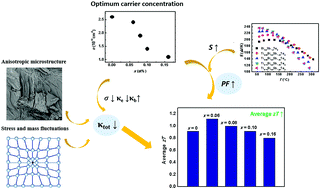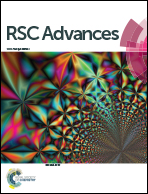Enhanced room-temperature thermoelectric performance of p-type BiSbTe by reducing carrier concentration†
Abstract
Improving room-temperature thermoelectric performance of p-type (Bi,Sb)2Te3 is essential for its practical application. However, the usual doping or alloying methods increase the carrier concentration and result in enhanced thermoelectric properties at high temperatures but not room temperature. In this work, we find that Ti is a promising dopant to shift the optimum thermoelectric properties of p-type (Bi,Sb)2Te3 to room temperature by reducing its carrier concentration. p-type Bi0.5Sb1.5−xTixTe3 samples with various Ti contents have been prepared using a simple melting method. The carrier concentration of Bi0.5Sb1.5−xTixTe3 is reduced by partially replacing Sb with Ti, leading to not only a significantly increased Seebeck coefficient but also an improved power factor near room temperature. Moreover, the total thermal conductivity near room temperature also decreases owing to the combined effect of decreased electrical conductivity and an anisotropic microstructure. An optimal zT value of ∼1.2 is achieved near room temperature for the sample containing 6 at% Ti, and its average zT value below 150 °C increases to ∼1.1, demonstrating the great potential of this material for room-temperature thermoelectric devices.



 Please wait while we load your content...
Please wait while we load your content...